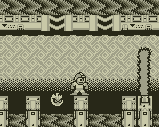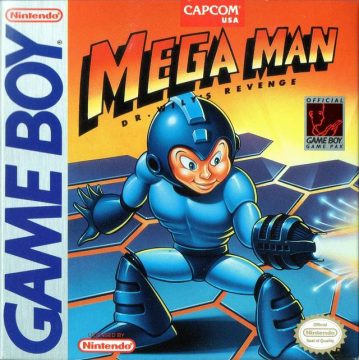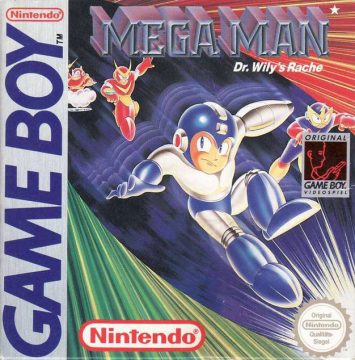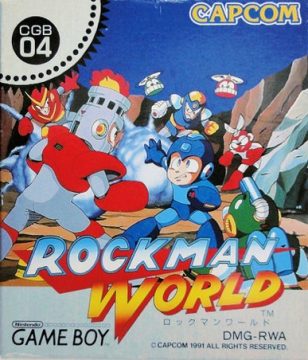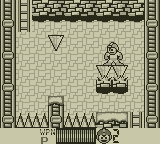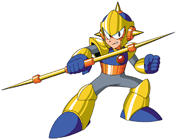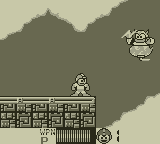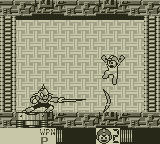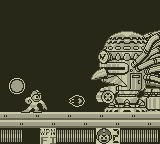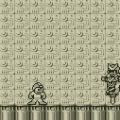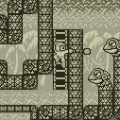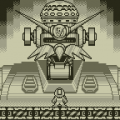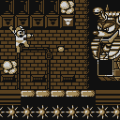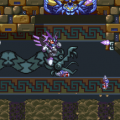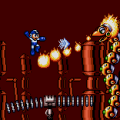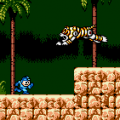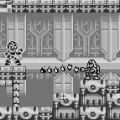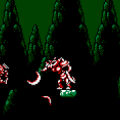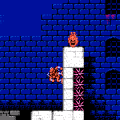- Mega Man (Series Introduction)
- Mega Man
- Mega Man 2
- Mega Man 3
- Mega Man 4
- Mega Man 5
- Mega Man 6
- Mega Man 7
- Mega Man 8
- Mega Man & Bass
- Mega Man 9
- Mega Man 10
- Mega Man 11
- Mega Man: Dr. Wily’s Revenge
- Mega Man II (Game Boy)
- Mega Man III (Game Boy)
- Mega Man IV (Game Boy)
- Mega Man V (Game Boy)
- Mega Man: The Wily Wars
- Mega Man (Game Gear)
- Rockman Complete Works
- Mega Man Anniversary Collection
- Mega Man 3 (DOS)
- Mega Man (DOS)
- Mega Man: Powered Up
- Super Adventure Rockman
- Wily & Right no RockBoard: That’s Paradise
- Mega Man Soccer
- Mega Man: The Power Battle
- Mega Man 2: The Power Fighters
- Rockman: Battle & Fighters
- Mega Man Battle & Chase
- Street Fighter x Mega Man
- Mega Man Tiger LCD Games
- Rockman & Forte (WonderSwan)
- Rockman’s IQ Challenge/Rockman Gold Empire/Rockman Strategy
- Mega Man Mobile Games / Panic Shot! Rockman
- Mega Man Unreleased Games
With the increasing success of the franchise and the popularity of the Game Boy, Capcom took the Blue Bomber on the go. With many of the Mega Man staff busy with the NES titles and other console development, Dr. Wily’s Revenge became the first in the series to be outsourced to another company: Minakuchi Engineering. Fortunately, the leader of the project at Minkuchi was a huge fan of the games, knowing them better than many higher-ups at Capcom.
While timelines are not exact, it’s easy to guess that this game’s story takes place sometime after Mega Man 2, with Wily rebuilding 8 of his old robots to fend off Mega Man from crossing his dastardly schemes. Due to the limited space for Game Boy carts of the time, the game only has 6 levels in total, two of them Wily Stages. The Robot Master select screen only has 4 bosses from the first Mega Man, with Guts Man and Bomb Man not making the cut. At the end of the first fairly lengthy fortress level, four teleport pods usually reserved for Robot Master rematches house Flash Man, Quick Man, Bubble Man, and Heat Man. Defeating them nets Mega Man their weapons and opens the path to face the new foe built with one objective:
RKN-001 Enker
The first in a line of “Mega Man Killers”, robots built for the sole purpose of sending the Blue Bomber to the scrapheap. His Barrier Spear can absorb Mega Man’s shots and send them back at him as waves, but his more dangerous attack is leaping about swiftly and slamming right into Mega Man. The weapon gained from him is called the Mirror Buster.
Even though the Robot Masters are recycled, that doesn’t mean the stages are direct ports of their NES originals. Many are radical departures from their classic counterparts. Along with borrowing elements and enemies from the first two NES games, there are plenty of brand-new obstacles and baddies exclusive to this cart. Ice Man’s stage contains melting ice cube platforms to hop across and falling icicle stalagtites that become steps to reach ladders. Elec Man’s base is littered with fans that push Mega Man through the air, as much of the level leads to open segments akin to Air Man’s stage in Mega Man 2. Cut Man’s factory-based lair holds the most dangerous of new threats: spinning angry cutting wheels that relentlessly bounce and pursue the Blue Bomber, as well as floating rotating cleaver-sized scissors placed precariously near bottomless pits and the scattered conveyors belts from Metal Man’s stage. As a nice bonus, all of the music for the main stages are well done rearranged versions of the NES tunes.
The conquest of the four main stages is rewarded with a new item: the Carry, a stationary Item-1-esque platform that’ll aid Mega Man across the final two new Wily bases. The difficulty ramps up big time as these fortresses stretch beyond any regular Wily stage in the NES series, complete with 5 bosses to contend with in the first stage alone. The lack of any E-Tanks further tilts the scales in the enemy’s favor. The last level starts a tradition for almost all the portable games, of the final segments taking place aboard a Wily-built spaceship. The final battle pits Mega Man against a huge, detailed robotic Wily head tank that is suspiciously weak to its own shots when reflected with the Mirror Buster, thus sparking another widely used Game Boy tradition of making the final boss weak to the Mega Man Killer or equivalent’s special weapon.
Revenge makes bold steps elevate the Game Boy titles above just being downgraded ports of the console brethren. The new obstacles and elements, complete with a well-designed new boss, help make the game fresh enough for those Mega Man fans looking for adventures on the go. Unfortunately, the ride is a difficult one. The lack of E-Tanks, the long Wily stages, and cramped boss rooms make every hit you take a very costly one. It’s also questionable that the four Mega Man 2 bosses are dumped so late in the game, giving you only one stage to use their stolen skills. The fact that Dr. Wily’s Revenge gives you two fire-based special weapons is an odd choice, as well. The new music accompanying the rearranged stage melodies is good, but doesn’t quite stand with the best of the portable-exclusives, let alone the greatest hits from the main releases. It’s an admirable first go with the outsourced team at least, and things would get gradually better as the Game Boy legacy would carry on.
A prototype for the Japanese Rockman World appeared on a Japanese auction site and was bought by Chris Covell. The prototype cart was not dumped publicly for the internet, but he did divulge many of the differences apparent in the ROM. The early portion lacked a password system, probably unfinished at the time of the build. Many of the sound effects aren’t implemented, either. A few stages, like Cut Man’s and Fire Man’s, had darker backgrounds that were lightened for the old blurry brick’s green screen, and many of the layouts were shifted around. The boss shutter doors are placed more in line with the NES games, proceeding straight rather than merely dropping Mega Man vertically down. Perhaps more maddenly, Capcom or Minakuchi decided to toss in more enemies in between the prototype build and the gold release.
